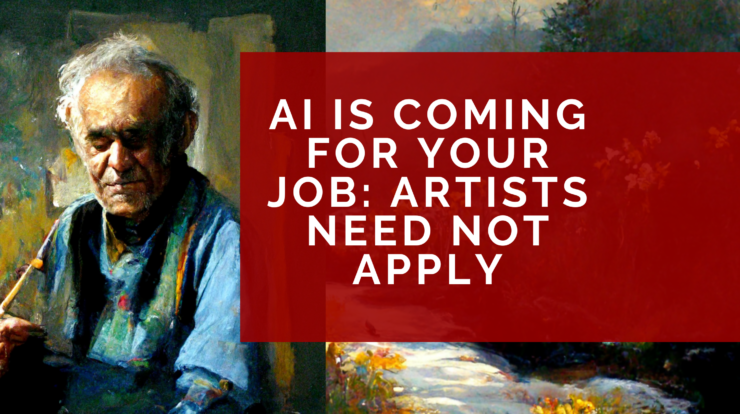
I read several recent articles about OpenAI’s DALL-E 2, an artificial intelligence (AI) system that can create realistic images and art from a text description prompt. Example images are stunning. The machine learning system was “trained” on a data set of 12 billion images to interpret the natural language inputs and create corresponding images.
The system is not just a one-off curiosity. It’s the latest development in a long line of AI-created art. For example, a 2017 algorithm created portraits that were exhibited at the University of Edinburgh. And in 2019, an AI system called AICAN created an abstract painting that sold for $432,000 at a Christie’s auction.
DALL-E 2 is in a beta, invite-only state right now, so I haven’t been able to test it directly, but several other AI image generators are open to the public. Out of curiosity, I registered an account with MidJourney, an AI image system currently in a public Beta, and started playing around. I was stunned by the results.

With simple prompts, the system generated artwork of various subjects and styles. All of the images in this post were generated by the system.

I was amazed at how well the system was able to interpret my prompts and create corresponding images. And I wasn’t the only one. A number of other users have posted their own examples of AI-generated art, and the results are impressive.
So what does this all mean for artists?
Simply put, AI is coming for your job.
While the artwork generated still has a distinctly digital feel, the systems are in very early days and will only improve. It’s not hard to imagine a future where AI-generated artwork is indistinguishable from human-generated artwork. With already-existing printing technologies, it’s not difficult to envision a future where AI-generated art is mass-produced and sold in galleries and art fairs.
Of course, this is all speculative. It’s possible that the systems will never reach the level of quality needed to replace human artists. But even if they don’t, they will likely have a profound impact on the art world.

Consider, for example, the way AI is already being used in the music industry. AI systems are being used to generate new songs, and some artists are already incorporating AI-generated elements into their own work. It’s not hard to imagine a future where AI-generated artwork is used in a similar way.
It’s also not hard to imagine a future where AI-generated artwork is used to create fake masterpieces. With the right input, an AI system could generate a fake Rembrandt or van Gogh.
Before you retire your paintbrushes and give up in despair, I believe that traditional, human-generated art will always be sought after by art collectors. There’s something about a human touch that can never be replicated by a machine, and collectors will always be interested in meeting artists, creating relationships, and having a human experience.

In fact, despite the possibility of a flood of AI-generated art entering the low-end of the art market, AI may actually end up being a great tool for artists. Just as AI is being used to generate new music, it could be used to generate new ideas for artists to work with. And as the systems get better at understanding and interpreting natural language inputs, they could be used as a kind of artistic collaborator, providing feedback and suggestions to artists.
Here are five additional ways artists could potentially employ AI to help them create:
1. Brainstorming
Artists could use AI systems to generate ideas for new artworks. By providing a prompt, or even just a keyword, an AI system could generate a variety of images for an artist to work with.
2. Collaboration
Artists could use AI systems as a kind of collaborator, providing feedback and suggestions on works in progress.

3. Evaluation
Artists could use AI systems to evaluate their work, providing objective feedback on composition, color, etc.
4. Printing
Artists could use AI systems to generate high-quality prints of their work, making it easier to sell their work online or in galleries.
5. Marketing
Artists could use AI systems to generate marketing materials, such as website designs, social media posts, and email newsletters.
What are your thoughts on AI-generated art? Do you think AI-generated art will ever be able to replace human-created art? What do you think are the benefits of AI-generated art? Are you concerned that AI-generated art will take away from the uniqueness of human-created art? What do you think the future of AI-generated art holds? Share your thoughts in the comments below.
Visual artists aren’t the only ones facing the oncoming AI revolution. All of the green text in this post and the click-bait headline were generated by OpenAI’s GPT-3 AI writer. None of us is safe . . .
